Effective Communication in Relationships: Building Stronger Bonds
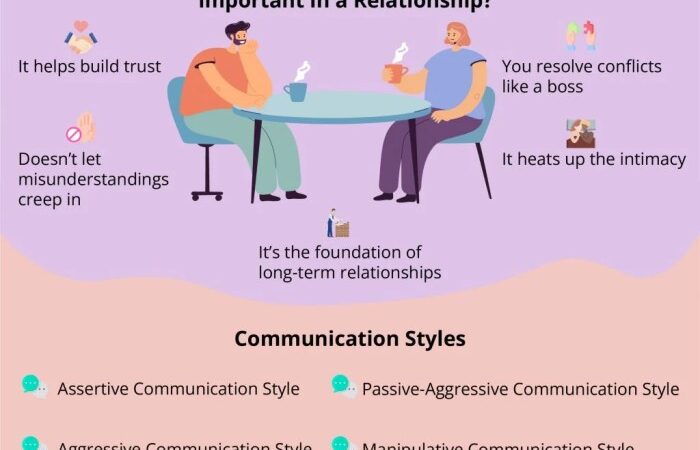
Effective communication in relationships is the cornerstone of a strong and fulfilling connection. It’s more than just exchanging words; it’s about understanding, empathy, and creating a safe space for both partners to express themselves openly and honestly. This guide explores the importance of clear and open communication, providing practical strategies for building essential communication skills, overcoming common barriers, and maintaining a healthy dialogue in the long term.
We’ll delve into the various communication styles that exist and their impact on relationships, offering insights into how to navigate differences and find common ground. You’ll discover how active listening, empathy, and non-verbal cues play a crucial role in fostering genuine understanding and connection.
We’ll also examine the influence of technology on communication, exploring both its benefits and potential drawbacks in the modern world.
Understanding Effective Communication
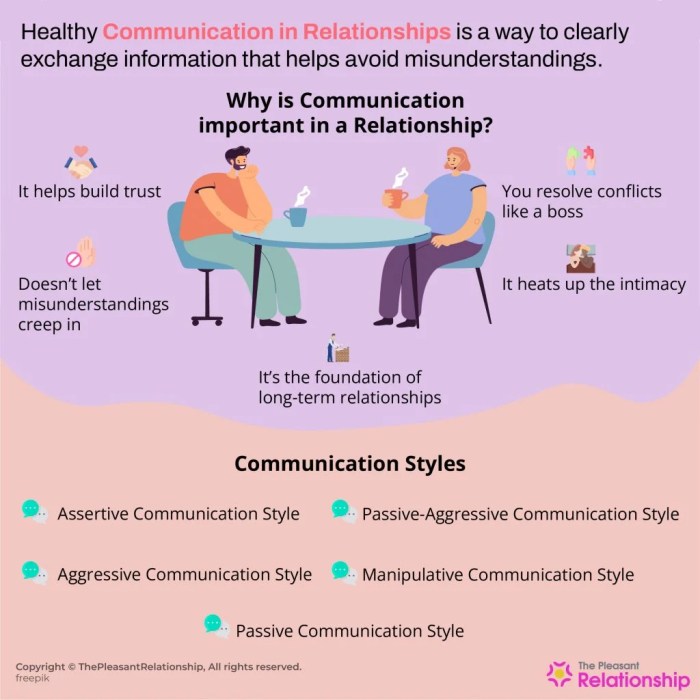
Effective communication is the cornerstone of any healthy and fulfilling relationship. It allows individuals to connect on a deeper level, build trust, and navigate challenges together. Clear and open communication fosters understanding, empathy, and a sense of shared purpose, ultimately strengthening the bond between individuals.
Communication Styles and Their Impact
Different individuals possess distinct communication styles, each with its strengths and potential pitfalls. Recognizing these styles and their impact on relationships is crucial for effective communication.
- Assertive Communication: Characterized by direct, honest, and respectful expression of thoughts and feelings. It values both individual needs and the needs of others, leading to healthy boundaries and mutual respect.
- Passive Communication: Involves avoiding direct expression of thoughts and feelings, often leading to resentment and misunderstandings. Individuals with this style may struggle to assert their needs or stand up for themselves.
- Aggressive Communication: Involves dominating conversations, disregarding the feelings of others, and resorting to insults or threats. This style can damage relationships and create a hostile environment.
- Passive-Aggressive Communication: Characterized by indirect expressions of anger or resentment, often through sarcasm, manipulation, or withholding of information. This style can be confusing and hurtful, making it difficult to resolve conflicts constructively.
Effective Communication Techniques
Several techniques can enhance communication in relationships, fostering understanding and connection.
- Active Listening: Involves paying full attention to the speaker, both verbally and non-verbally, demonstrating genuine interest and understanding. This includes making eye contact, nodding, asking clarifying questions, and reflecting on what the speaker has said.
- Empathy: The ability to understand and share the feelings of another person, even if you don’t agree with their perspective. It involves acknowledging and validating their emotions, and creating a safe space for open and honest communication.
- Non-Verbal Cues: These include facial expressions, body language, and tone of voice. They can convey emotions and intentions, often more powerfully than words alone. Paying attention to these cues can enhance understanding and build trust.
- “I” Statements: These statements focus on expressing personal feelings and needs without blaming or accusing the other person. For example, instead of saying “You always make me feel bad,” you could say “I feel hurt when you say that.” This promotes constructive dialogue and reduces defensiveness.
Building Communication Skills: Effective Communication In Relationships
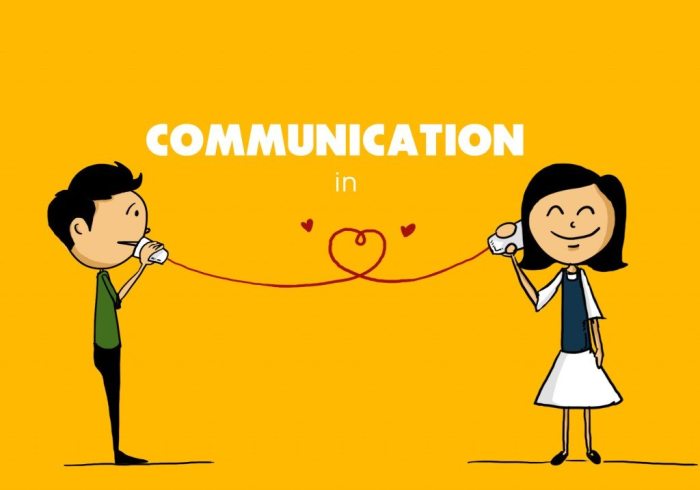
Effective communication is a vital component of any successful relationship. Building strong communication skills involves actively listening, understanding your partner’s perspective, and effectively expressing your thoughts and feelings. By developing these skills, you can create a foundation for deeper connection, mutual respect, and healthy conflict resolution.
Active Listening
Active listening goes beyond simply hearing the words your partner is saying. It involves actively engaging with their message, demonstrating understanding, and creating a safe space for open communication.
- Paraphrasing: Restating your partner’s message in your own words helps to ensure you’ve understood their meaning correctly. For example, “So, you’re feeling frustrated because you’ve been working late and haven’t had time to relax.”
- Summarizing: Summarizing your partner’s main points helps to show that you’ve been paying attention and have grasped the essence of their message. “It sounds like you’re feeling overwhelmed by the workload and you’re concerned about not being able to manage everything.”
- Asking Clarifying Questions: Asking clarifying questions demonstrates your interest and ensures that you understand their perspective fully. “Can you tell me more about what happened at work today that made you feel frustrated?”
Empathy
Empathy is the ability to understand and share your partner’s feelings. It involves stepping into their shoes and seeing the situation from their perspective, even if you don’t agree with their viewpoint.
“Empathy is the ability to understand and share the feelings of another.”
Merriam-Webster Dictionary
Empathy allows you to respond to your partner’s emotions with sensitivity and understanding, fostering a sense of connection and validation.
Conflict Resolution
Conflicts are inevitable in any relationship. However, the way you handle disagreements can significantly impact the strength and longevity of your bond.
- Choose the Right Time and Place: Avoid discussing sensitive topics when you’re tired, stressed, or in a public setting. Select a time and place where you can both feel comfortable and focused.
- Focus on the Issue, Not the Person: Keep the conversation centered on the specific issue at hand, avoiding personal attacks or blaming. For example, instead of saying “You always forget to do the dishes,” try “I feel frustrated when the dishes aren’t done because it makes it harder for me to prepare meals.”
- Active Listening: Apply the active listening skills discussed earlier to ensure you understand your partner’s perspective.
- Compromise: Conflict resolution often involves finding a solution that works for both parties. Be willing to compromise and find common ground.
Overcoming Communication Barriers
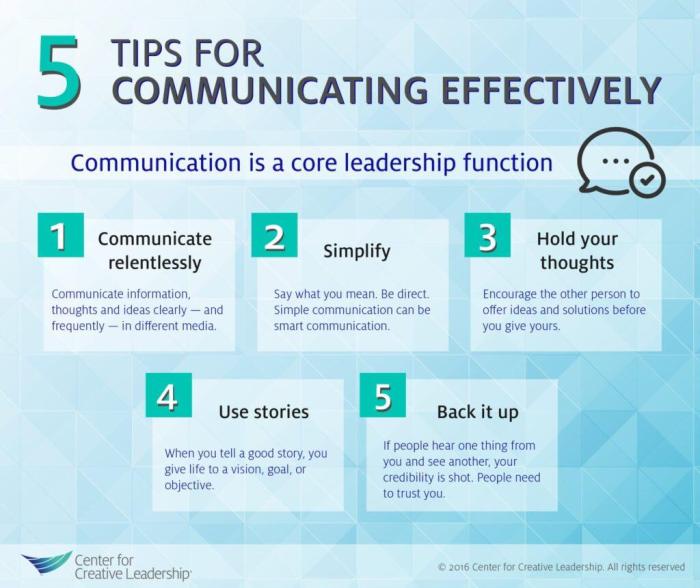
Effective communication is essential for healthy relationships, but sometimes barriers can arise that hinder our ability to connect with others. These barriers can be subtle or obvious, and they can stem from our own assumptions, judgments, or emotional reactions. Understanding these barriers and developing strategies to overcome them is crucial for fostering open and meaningful communication.
Identifying Common Communication Barriers
Recognizing the common barriers to effective communication is the first step toward overcoming them. These barriers can arise from various sources, including:
- Assumptions: Making assumptions about what the other person is thinking or feeling can lead to misunderstandings. We often project our own experiences and beliefs onto others, leading to inaccurate interpretations of their words and actions.
- Judgments: Judging others, whether consciously or unconsciously, can create a defensive and closed-off atmosphere. When we judge, we are essentially dismissing the other person’s perspective and closing ourselves off to their point of view.
- Emotional Reactivity: When we react emotionally to what someone says, it can be difficult to engage in a calm and rational conversation. Our emotions can cloud our judgment and make it challenging to listen attentively and respond constructively.
Strategies for Overcoming Communication Barriers
Overcoming communication barriers requires conscious effort and a willingness to change our communication habits. Here are some effective strategies:
- Practicing Mindfulness: Mindfulness involves paying attention to the present moment without judgment. When we practice mindfulness, we become more aware of our thoughts, feelings, and reactions, allowing us to respond more thoughtfully instead of reacting impulsively. This can help us to avoid making assumptions, reduce judgment, and respond more calmly to challenging situations.
- Using “I” Statements: “I” statements are a powerful tool for expressing our thoughts and feelings without blaming or accusing the other person. For example, instead of saying “You always make me feel bad,” you could say “I feel hurt when you say that.” This approach allows us to take responsibility for our feelings and encourages open dialogue.
- Seeking Professional Help: If communication barriers persist despite our best efforts, seeking professional help from a therapist or counselor can be beneficial. A trained professional can provide guidance and support in developing effective communication skills and addressing underlying issues that may be contributing to communication challenges.
Comparing Effective and Ineffective Communication Strategies
The following table compares and contrasts effective and ineffective communication strategies:
| Effective Communication Strategies | Ineffective Communication Strategies |
|---|---|
| Active listening | Passive listening |
| Empathy and understanding | Judgment and criticism |
| Clear and concise language | Vague or ambiguous language |
| “I” statements | “You” statements |
| Non-verbal cues that reinforce verbal communication | Non-verbal cues that contradict verbal communication |
| Respect for boundaries | Disregard for boundaries |
| Focus on finding solutions | Focus on blaming and arguing |
Maintaining Open Communication

Open communication is the lifeblood of any healthy relationship. It involves being able to express your thoughts and feelings freely and honestly, while also being receptive to your partner’s perspective. It’s about creating a safe space where both individuals feel heard, understood, and valued.
Fostering Open and Honest Communication
Open and honest communication is essential for building trust and intimacy in a relationship. Here are some tips for fostering this kind of communication:
- Active Listening: Pay attention to what your partner is saying, both verbally and nonverbally. Ask clarifying questions to ensure you understand their perspective, and avoid interrupting.
- Empathy: Try to see things from your partner’s point of view, even if you don’t agree with them. Acknowledge their feelings and validate their experiences.
- Non-Judgmental Approach: Create a safe space for your partner to express themselves without fear of judgment or criticism. Listen with an open mind and avoid getting defensive.
- Regular Check-Ins: Schedule regular time to talk about your relationship, even if it’s just for a few minutes each day. This can help you stay connected and address any issues before they become major problems.
- “I” Statements: When expressing your feelings, use “I” statements instead of “You” statements. This helps to avoid blaming or accusing your partner. For example, instead of saying “You always make me feel ignored,” try saying “I feel ignored when you don’t respond to my messages.”
Setting Boundaries and Communicating Expectations
Clear boundaries and expectations are crucial for healthy communication. They provide a framework for navigating difficult conversations and ensure that both partners feel respected and valued.
- Identify Your Needs and Limits: Reflect on your values, beliefs, and needs. What are your non-negotiables? What behaviors are acceptable and unacceptable in your relationship?
- Communicate Your Boundaries Clearly: Once you have identified your boundaries, communicate them to your partner directly and assertively. Use “I” statements to express your needs and expectations.
- Be Consistent: Enforce your boundaries consistently. If you allow a certain behavior one time, it can be difficult to enforce it later.
- Negotiate and Compromise: Be open to discussing and negotiating your boundaries with your partner. It’s important to find a balance that works for both of you.
Positive Communication Habits
Positive communication habits can strengthen a relationship and create a more harmonious environment.
- Appreciation and Gratitude: Regularly express your appreciation for your partner and the things they do for you. This can help foster a sense of connection and positivity.
- Humor: Humor can be a great way to diffuse tension and lighten the mood. However, ensure that your humor is respectful and doesn’t come at the expense of your partner.
- Affection and Physical Touch: Physical touch can be a powerful way to communicate love and affection. This can include hugs, kisses, holding hands, or simply being physically close.
- Quality Time: Make time for each other, even if it’s just for a few minutes each day. This can involve engaging in activities you both enjoy or simply spending time together in silence.
The Impact of Technology on Communication

Technology has revolutionized the way we communicate, profoundly influencing relationships in both positive and negative ways. The constant evolution of technology has brought about new tools and platforms that have transformed the landscape of human interaction, making communication more accessible, efficient, and sometimes, even more complex.
Benefits of Technology in Communication
Technology has undeniably made communication easier and more accessible, bridging geographical distances and facilitating connections across the globe. These benefits have significantly impacted relationships, allowing individuals to stay connected with loved ones, build new relationships, and maintain professional connections.
- Instantaneous Communication: Instant messaging apps, video calls, and social media platforms have made it possible to connect with people in real time, regardless of their location. This immediacy has allowed for quick and convenient communication, fostering a sense of closeness even when physically apart.
- Increased Accessibility: Technology has made communication more accessible to individuals with disabilities, allowing them to participate in conversations and relationships that may have been challenging before. Assistive technologies, such as text-to-speech software and screen readers, have opened up new avenues for communication and connection.
- Building and Maintaining Relationships: Technology has played a crucial role in building and maintaining relationships, especially for individuals who are geographically distant. Social media platforms and online dating apps have facilitated connections and fostered the development of new relationships.
Drawbacks of Excessive Technology Use, Effective communication in relationships
While technology has undoubtedly brought many benefits to communication, excessive reliance on technology can have detrimental effects on relationships. The constant bombardment of information, the allure of virtual connections, and the potential for miscommunication can all contribute to challenges in face-to-face interactions and genuine connection.
- Reduced Face-to-Face Interaction: The convenience of technology can lead to a decline in face-to-face interactions, which are essential for building strong and meaningful relationships. The lack of nonverbal cues, such as body language and tone of voice, can lead to misinterpretations and misunderstandings.
- Distraction and Reduced Attention Span: The constant notifications and distractions from technology can make it difficult to focus on conversations and truly engage with loved ones. This can lead to feelings of disconnection and a lack of genuine presence in relationships.
- Misinterpretation and Conflict: The absence of nonverbal cues in digital communication can lead to misinterpretations and misunderstandings. Text messages, emails, and social media posts can be easily misinterpreted, leading to conflict and strained relationships.
Ultimate Conclusion
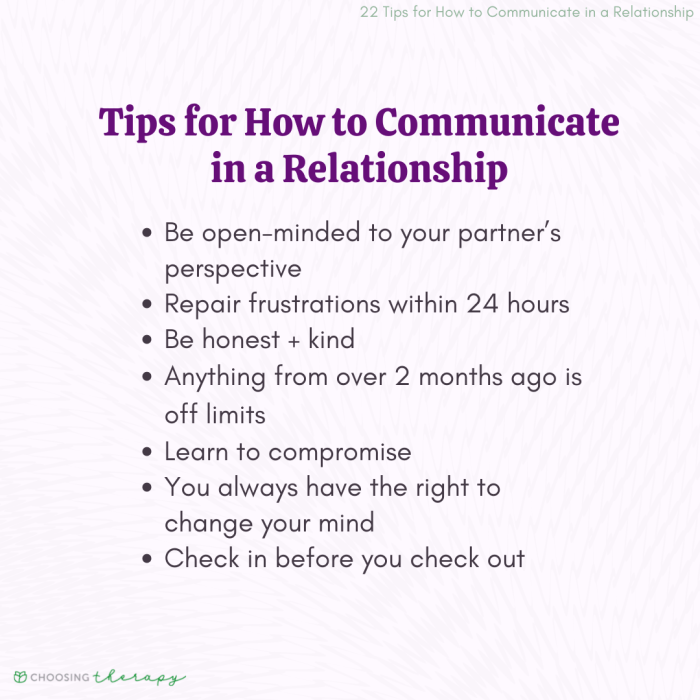
Mastering effective communication in relationships is an ongoing journey that requires patience, effort, and a willingness to grow. By implementing the strategies Artikel in this guide, you can cultivate a deeper understanding of your partner, strengthen your bond, and create a more fulfilling and harmonious relationship.
Remember, communication is the lifeblood of any relationship, and by nurturing it, you can build a foundation for lasting love and happiness.
Comments are closed.